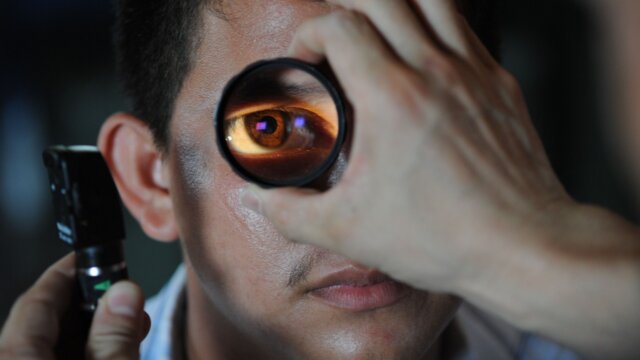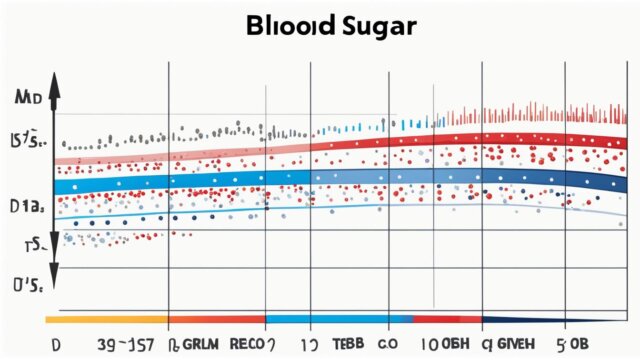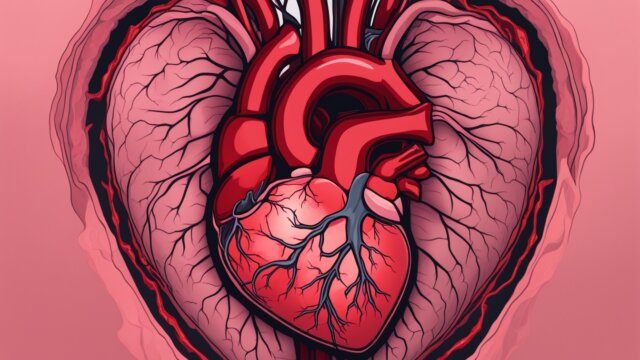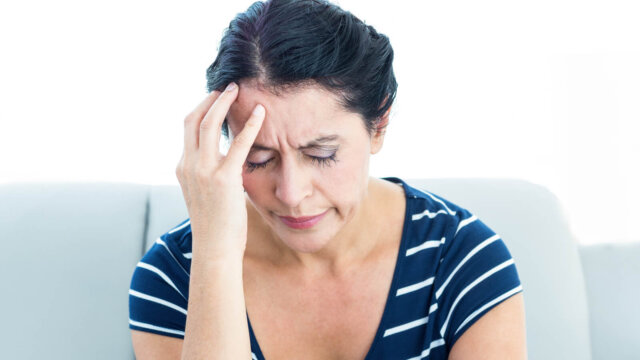FTC disclaimer: This post may contains affiliate links and we will be compensated if you click on a link and make a purchase.
Cervical cancer is mostly preventable but still a big health issue worldwide. In the U.S., over 14,000 new cases of invasive cervical cancer will be found in 2023. This shows we need to know more and take action to prevent it.
Cervical cancer is special because it can be stopped with regular checks and a vaccine. The Gardasil 9 vaccine helps prevent cancers caused by seven HPV types and genital warts. The CDC says all girls and boys should get the HPV vaccine at age 11 or 12. It’s also available for young people up to age 26 who missed the chance earlier.
Key Takeaways
- Cervical cancer is highly preventable through HPV vaccination and regular screening.
- The Gardasil 9 vaccine can prevent precancers and cancers caused by 7 HPV types.
- CDC recommends HPV vaccination for girls and boys starting at age 11 or 12
- Regular cervical cancer screening, including Pap smears and HPV tests, is crucial
- Certain groups may face challenges in accessing healthcare, leading to a disproportionate burden of cervical cancer
What is Cervical Cancer?
Cervical cancer starts in the cells of the cervix, the lower part of the uterus. It’s often caused by certain types of human papillomavirus (HPV). Other factors like smoking, a weak immune system, and long-term use of birth control can also play a role.
Causes and Risk Factors
HPV infection is the main cause of cervical cancer. This virus can harm the cervix’s cells, leading to cancer if not treated. Smoking, a weak immune system, and long-term birth control use are also risk factors.
Symptoms and Early Detection
In the early stages, cervical cancer may not show symptoms. But as it grows, symptoms like abnormal bleeding, pelvic pain, and painful sex may appear. Getting regular Pap smears and HPV tests is key for catching it early.
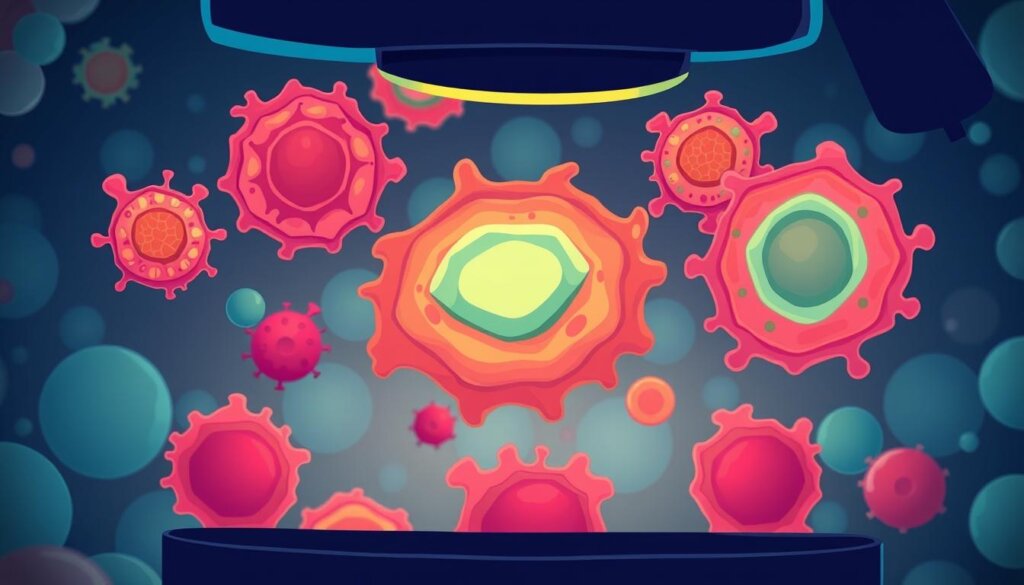
Cervical cancer can be squamous cell, adenocarcinoma, or mixed. Knowing the types helps doctors diagnose and treat it better.
“Regular cervical cancer screening starting at the age of 30 (25 years for women living with HIV) is recommended to detect cervical disease.”
Early detection is vital for managing cervical cancer. Catching it early lets doctors stop it from getting worse and improve treatment chances.
The Role of HPV Infection in Cervical Cancer
Human papillomavirus (HPV) is the main cause of cervical cancer. There are over 100 types of HPV, and some can cause cancer if not treated. Almost everyone who is sexually active will get HPV at some point. About half of these infections are from high-risk types.
HPV spreads through sex and can affect both men and women. Most infections go away on their own, but some can lead to cancer. HPV causes about 630,000 cancers worldwide each year. In the U.S., over 47,100 new cases are reported each year, with HPV causing about 37,300 of them.
| High-Risk HPV Types |
|---|
| HPV 16, 18, 31, 33, 35, 39, 45, 51, 52, 56, 58, and 59 |
Regular screenings and the HPV vaccine can lower cervical cancer risk. The vaccine can prevent up to 90% of HPV-related cancers. Screenings help find and remove precancerous cells before they turn into cancer.
The HPV vaccine is recommended for kids starting at 11 or 12. Those who start before 15 need two doses, and those starting at 15 or older need three. Starting the vaccine at 9-12 years old offers the best protection. The vaccine is approved for people up to 45, but it’s mainly for those under 27.
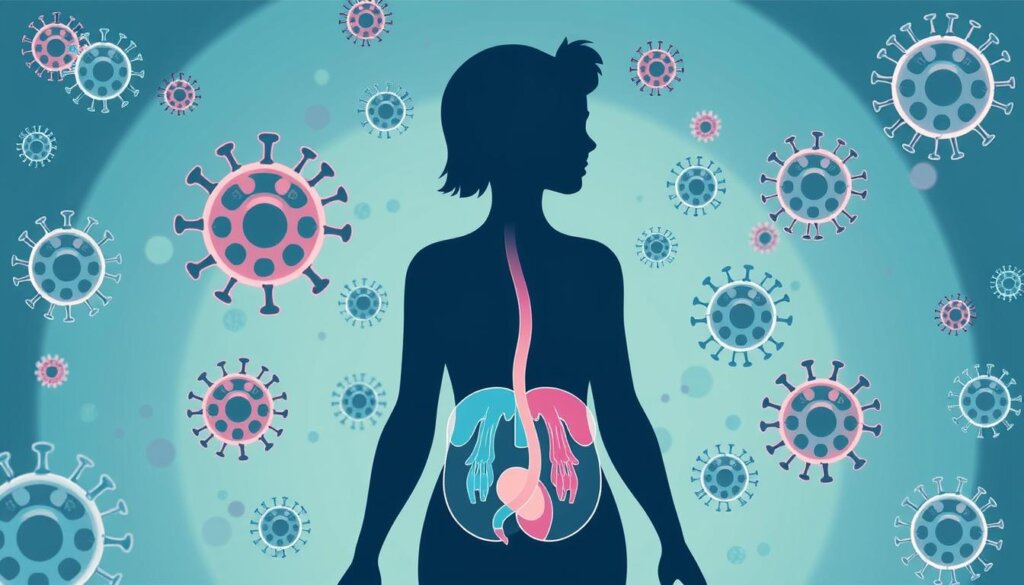
HPV is a key player in cervical cancer. Infections with high-risk types can lead to cancer if not treated. Vaccination and screenings are key to preventing this disease.
“Nearly all sexually active people, regardless of their sex, gender identity, or sexual orientation, are infected with HPV within months to a few years of becoming sexually active.”
Cervical Cancer Screening: Pap Smears and HPV Tests
Getting regular cervical cancer screening is key to catching cancer early. There are three main ways to screen: the HPV test, the Pap test, and the HPV/Pap cotest. The USPSTF says people aged 21-29 should start with a Pap test at 21, then get one every 3 years.
For those 30-65, you can choose an HPV test every 5 years, an HPV/Pap cotest every 5 years, or a Pap test every 3 years.
The American Cancer Society (ACS) suggests starting cervical cancer screening at 25 with an HPV test. You should get tested every 5 years until you’re 65. This matches research showing that the benefits for those 21 to 24 are small. But, there are exceptions for people with weak immune systems or certain health issues.
Importance of Regular Screening
Cervical cancer screening tests are vital for catching cancer early. They help lower the risk of death from cervical cancer. These tests are done during a pelvic exam, using a speculum to get cells from the cervix.
The samples are then sent to a lab for analysis. You’ll get the results in 1-3 weeks.
But, screening might not work as well for people who are obese. It’s hard to see the cervix and get cell samples. So, everyone with a cervix must follow the screening guidelines, regardless of their body type.
Screening Guidelines and Recommendations
The ACS updated its guidelines in 2020. Now, they recommend starting screening at 25 with an HPV test. This is because HPV tests are more accurate at finding precancerous cells.
Even if you’ve had the HPV vaccine, you still need to get screened. The guidelines keep changing with new vaccine info and better screening tests.
You can get cervical cancer screening from many healthcare providers and clinics. This makes it easy for people all over the US to get checked. By following the guidelines, you can help prevent cervical cancer.
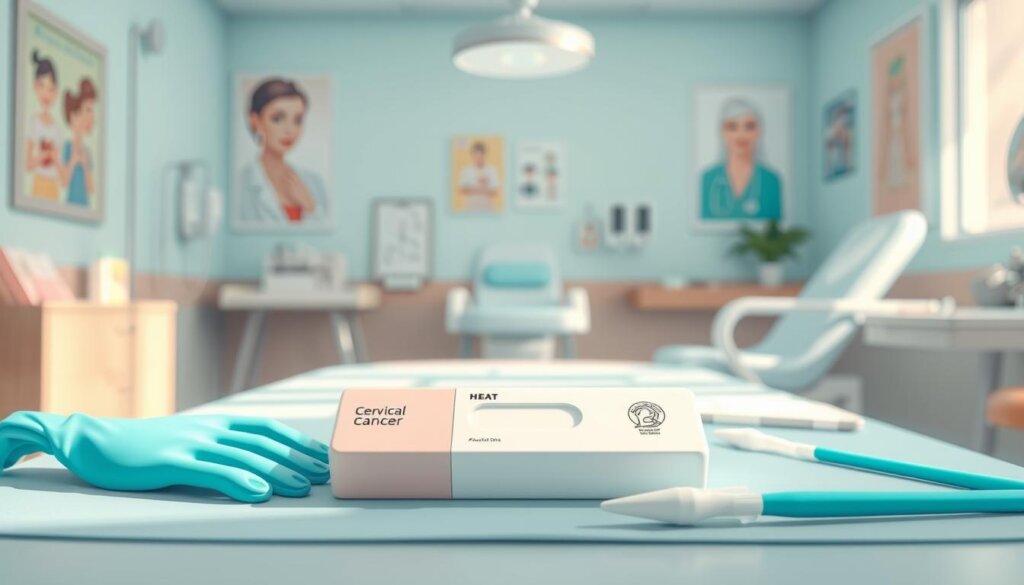
HPV Vaccination: A Powerful Preventive Measure
The HPV vaccine is safe and works well to prevent cervical cancer. It has cut cervical cancer cases by almost 90% in girls vaccinated before 17. Also, it lowers the risk of cervical cancer by 63% in those who got the vaccine.
Types of HPV Vaccines
Gardasil 9 is approved for both girls and boys aged 9 to 45 in the U.S.. It protects against HPV types that cause most cervical, vaginal, and vulvar cancers. The CDC suggests starting the vaccine at age 11 or 12 to get the most protection.
Recommended Schedule and Age for Vaccination
The HPV vaccine is given in two or three doses, based on age. About 80% of people got vaccinated before 17. It protects against four HPV types, leading to fewer cervical cancer cases.
Studies in Australia and Sweden show big drops in HPV infections covered by the vaccine. Vaccinating girls early is key to lower cervical cancer rates.
HPV vaccination rates are up in the U.S., but more work is needed. Some parents hesitate to vaccinate their daughters at 11-12. Early vaccination is more effective in preventing cervical cancer.
This study marks a big win in showing HPV vaccines prevent cervical cancer.
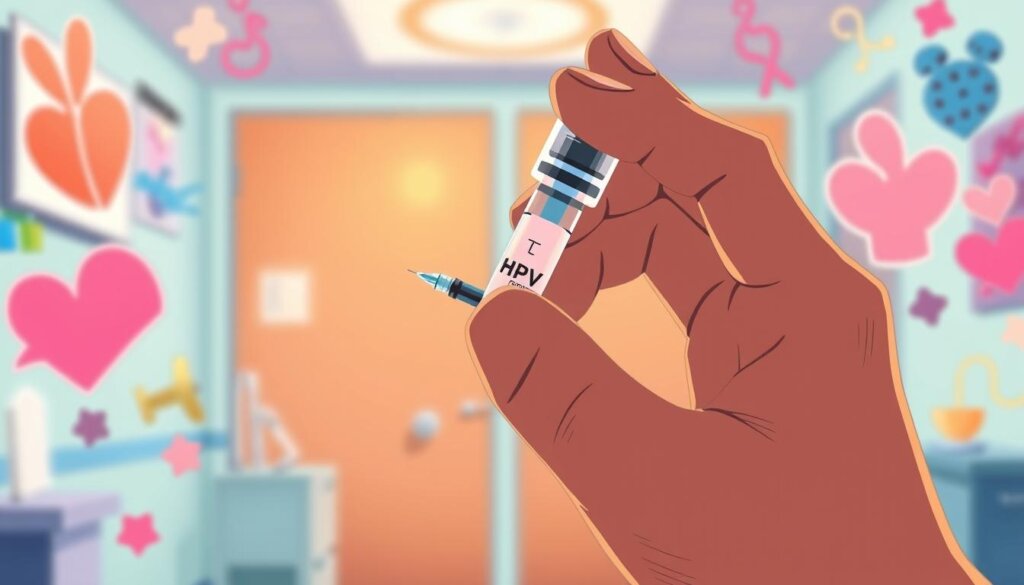
Cervical Cancer Statistics | Details |
|---|---|
HPV 16 Genotype | Accounts for 70% of cervical cancer cases |
Cervical Cancer Cases in India | 18.3% of all cancer cases |
Annual Cervical Cancer Deaths in India | Approximately 60,000 |
Annual Cervical Cancer Cases in India | Approximately 100,000 |
Global Cervical Cancer Cases (2020) | 604,100 new cases |
Global Cervical Cancer Deaths (2020) | 341,831 |
Percentage of Global Cervical Cancer Cases in India | 27% |
WHO Cervical Cancer Incidence Target | Less than 4 per 100,000 women |
The study highlights the need for strong HPV vaccination efforts, especially in high-risk areas. With safe and effective vaccines, we can now prevent cervical cancer more effectively than ever.
Lifestyle Factors and Cervical Cancer Risk
Smoking and Cervical Cancer
HPV infection is a big risk for cervical cancer. However, lifestyle choices can also raise the risk. Smoking harms the cervix cells, making them more likely to get HPV and change into cancer.
Women who smoke are about twice as likely to get cervical cancer as those who don’t. Long-term use of birth control pills and a weak immune system also increase the risk.
HPV is the main cause of cervical cancer. But smoking, diet, and weight also matter. Eating lots of fruits and veggies and eating less red meat can help lower the risk.
Too much sugar and not moving enough can raise cancer risk.
Most cervical cancer happens in women aged 20 to 50. Having a family history of cervical cancer also raises your risk. Regular Pap smears and HPV tests are key for early detection and prevention.
“Cervical cancer is one of the most preventable and treatable forms of cancer, provided that it is detected and managed early.”
Knowing the risks and taking steps can lower your chance of cervical cancer, improving your health and well-being.
Cervical Cancer: Understanding Risks and Prevention
Cervical cancer is preventable and treatable if caught early. Knowing the risks and taking steps can lower your chance of getting it.
Preventing cervical cancer starts with the HPV vaccine. The HPV vaccine is for preteens aged 11 to 12. It can start at age 9. It’s also for everyone up to 26 years old, and some adults up to 45 may get it too.
Getting regular cervical cancer tests is key. The Pap test detects early changes in the cervix, and the HPV test finds the virus that causes these changes. The CDC offers free or low-cost tests.
Other ways to lower risk include avoiding smoking. By taking these steps, you can greatly improve your chances of catching cervical cancer early.
Cervical cancer is preventable and treatable. By knowing the risks and taking action, you can protect your health.
Statistic | Value |
|---|---|
Cervical cancer ranking among all cancers | 14th |
Cervical cancer ranking among women worldwide | 4th |
Annual cervical cancer deaths in the US | 4,000 |
Annual new cervical cancer cases worldwide | 500,000+ |
Annual cervical cancer deaths worldwide | 250,000 |
Cervical cancer cases in developing countries | 80% |
Cervical cancer cases due to HPV types 16 and 18 | 75%+ |
Cervical cancer cases that are adenocarcinoma | 5% |
Cervical cancer cases caused by persistent HPV infection | 99%+ |
“Cervical cancer is a highly preventable and treatable form of cancer when detected early. By understanding the key risk factors and taking proactive measures, individuals can significantly reduce their chances of developing this disease.”
Diagnosis and Staging of Cervical Cancer
Diagnosing and staging cervical cancer is key. It helps decide the right treatment and how well you might do. Doctors use tests to find out if you have cancer and how far it has spread.
Biopsy and Imaging Tests
A biopsy is often the first step. Testing takes a small piece of cervical tissue. This test helps doctors see if you have cancer and what type it is. They might also use CT scans, MRI, and PET scans to see how big the cancer is and if it has spread.
Staging and Grading Systems
After finding cervical cancer, doctors stage it. The FIGO system is used, with stages from I to IV. Lower stages mean less spread and higher stages mean more. Each stage has more details about the tumor’s size and how deep it is.
Doctors also grade cancer, which tells them how fast the cancer cells grow. A higher grade means the cancer grows faster and might be more aggressive.
The stage and grade of cervical cancer help decide treatment. They also help predict how well you might do. Knowing these details helps doctors create a treatment plan just for you.
Stage | Description |
|---|---|
Stage I | Cancer is limited to the cervix. Based on tumor size and depth of invasion, this stage is further divided into IA1, IA2, IB1, IB2, and IB3. |
Stage II | Cancer has spread beyond the cervix but not to the pelvic wall or lower third of the vagina. This stage is further divided into IIA1, IIA2, and IIB. |
Stage III | Cancer has spread to the pelvic wall, the lower third of the vagina, and/or the ureters/kidneys. This stage is further divided into IIIA, IIIB, IIIC1, and IIIC2. |
Stage IV | Cancer has spread to nearby pelvic organs (IVA) or other parts of the body (IVB). |
“Early detection of cervical cancer significantly improves overall survival rates and reduces recurrence.”
Treatment Options for Cervical Cancer
Understanding cervical cancer treatment is key. The right plan depends on the cancer stage, your health, and what you prefer. Main treatments include surgery, radiation, and chemotherapy.
Surgery
For early cancer, surgery like a hysterectomy or cone biopsy may be needed. A hysterectomy removes the uterus and sometimes ovaries and fallopian tubes. Radical hysterectomy takes out more, including part of the vagina.
Radical trachelectomy is an option for those wanting to keep their fertility.
Radiation Therapy
Radiation therapy is a strong treatment for cervical cancer. It uses high-energy rays to kill cancer cells. It can be used alone or with chemotherapy.
Chemotherapy
Chemotherapy uses medicines to fight cancer cells. Drugs like cisplatin and paclitaxel are often used. Targeted and immunotherapy may also be part of the plan.
Your healthcare team will help you choose the best treatment for you. They might suggest clinical trials for new treatments. After treatment, regular check-ups are important to watch for cancer coming back.
FAQ
What is cervical cancer?
Cervical cancer starts in the cells of the cervix. This is the lower part of the uterus. It’s often caused by certain types of human papillomavirus (HPV).
What are the main causes and risk factors for cervical cancer?
Persistent HPV infection is the main cause. Smoking, a weak immune system, and long-term use of oral contraceptives also increase risk.
What are the symptoms of cervical cancer?
Early cervical cancer might not show symptoms. But later, you might see abnormal vaginal bleeding, pelvic pain, and painful sex.
How can cervical cancer be detected and prevented?
Screening should include Pap tests and HPV tests. These can find abnormal cells early. Screening should start at 21, and the HPV vaccine also helps prevent it.
How does HPV infection lead to cervical cancer?
HPV is the main cause. It’s a group of viruses that can infect the cervix. This can lead to cancer if not treated early.
What are the screening guidelines for cervical cancer?
Start screening at 21 with Pap and HPV tests. How often it happens depends on age and test results. Follow guidelines for early detection.
Who should get the HPV vaccine, and how effective is it?
The HPV vaccine, Gardasil 9, is for 9 to 45-year-olds. It protects against types that cause cervical and other cancers. It’s most effective before sexual activity.
How is cervical cancer diagnosed and staged?
Tests like biopsies and imaging are used if cancer is suspected. The cancer is then staged based on size and spread.
What are the treatment options for cervical cancer?
Treatment depends on the cancer’s stage and the patient’s health. Options include surgery, radiation, and chemotherapy. The team will choose the best plan.


